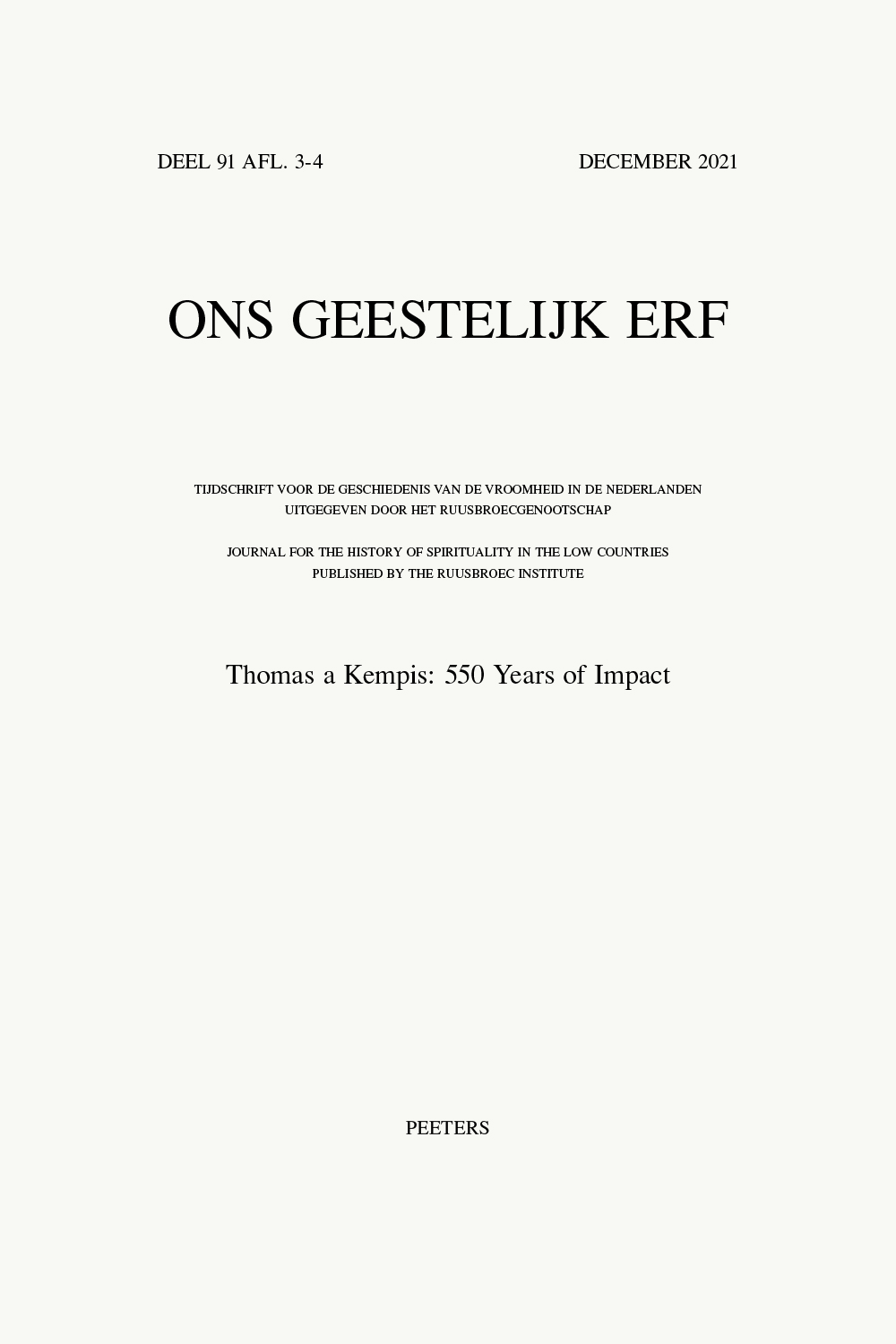 previous article in this issue previous article in this issue | next article in this issue  |

Preview first page |
Document Details : Title: East and West in the Devotio moderna? Subtitle: A Critical Reexamination Author(s): GOUDRIAAN, Koen Journal: Ons Geestelijk Erf Volume: 90 Issue: 3-4 Date: 2020 Pages: 330-362 DOI: 10.2143/OGE.90.3.3289111 Abstract : This article examines the hypothesis according to which the distribution and circulation of vernacular literature points to differences in spirituality within the Devotio moderna between the Western and the Eastern parts of the present-day Netherlands – in particular in the historical diocese of Utrecht –, the West being more inclined towards mysticism, the East towards asceticism. The hypothesis was first clearly formulated around the year 2000 and quickly gained ground in the next decade. It highlights the position of the Tertiaries within the orbit of the Devotio moderna, whose heartland was located in the provinces of Holland and Utrecht. The first part of the argument reconstructs the genesis of this hypothesis, which may be understood against the background of long term developments in the historiography of the Devotio moderna. Additionally, tendencies already present were reinforced by a remarkable series of new discoveries in the field of vernacular literature of devotion and religious instruction. Time and again these texts, mostly translated from the Latin, appeared to have started their circulation early in the fifteenth century within the milieu of the Tertiaries of the western part of the Netherlands, from which area they spread into other regional and institutional branches of the Devotio moderna. The next section investigates this corpus of literature as a whole with a view to the question whether it may be taken as evidence for a distinctly ‘Tertiary’ or ‘western-Netherlandish’ type of spirituality. The findings are negative, and as an alternative it is suggested that the texts in question may be arranged according to the levels or grades of monastic instruction whose application is more or less generalized in the various branches of the Devotio moderna. They offer appropriate material for the beginning, the advanced and the perfect, thereby spanning the whole range from the ascetic base to the heights of contemplation. The final part of this contribution offers some suggestions for an alternative model of the distribution of vernacular texts within the Devotio moderna. This approach contains quantitative as well as qualitative elements. On a quantitative level, the pattern of distribution of texts is linked to the geographical incidence of religious houses in the sphere of the Devotio moderna, not only in the diocese of Utrecht but also in the dioceses more to the south that contained Dutch speaking areas. For the present-day Netherlands the data are derived from the online census Monasteries in the Netherlands until 1800. From a qualitative point of view, an outline is given of the mechanisms behind local and regional patterns of distribution, based on a range of recent in-depth studies by scholars in various disciplines. |
|


